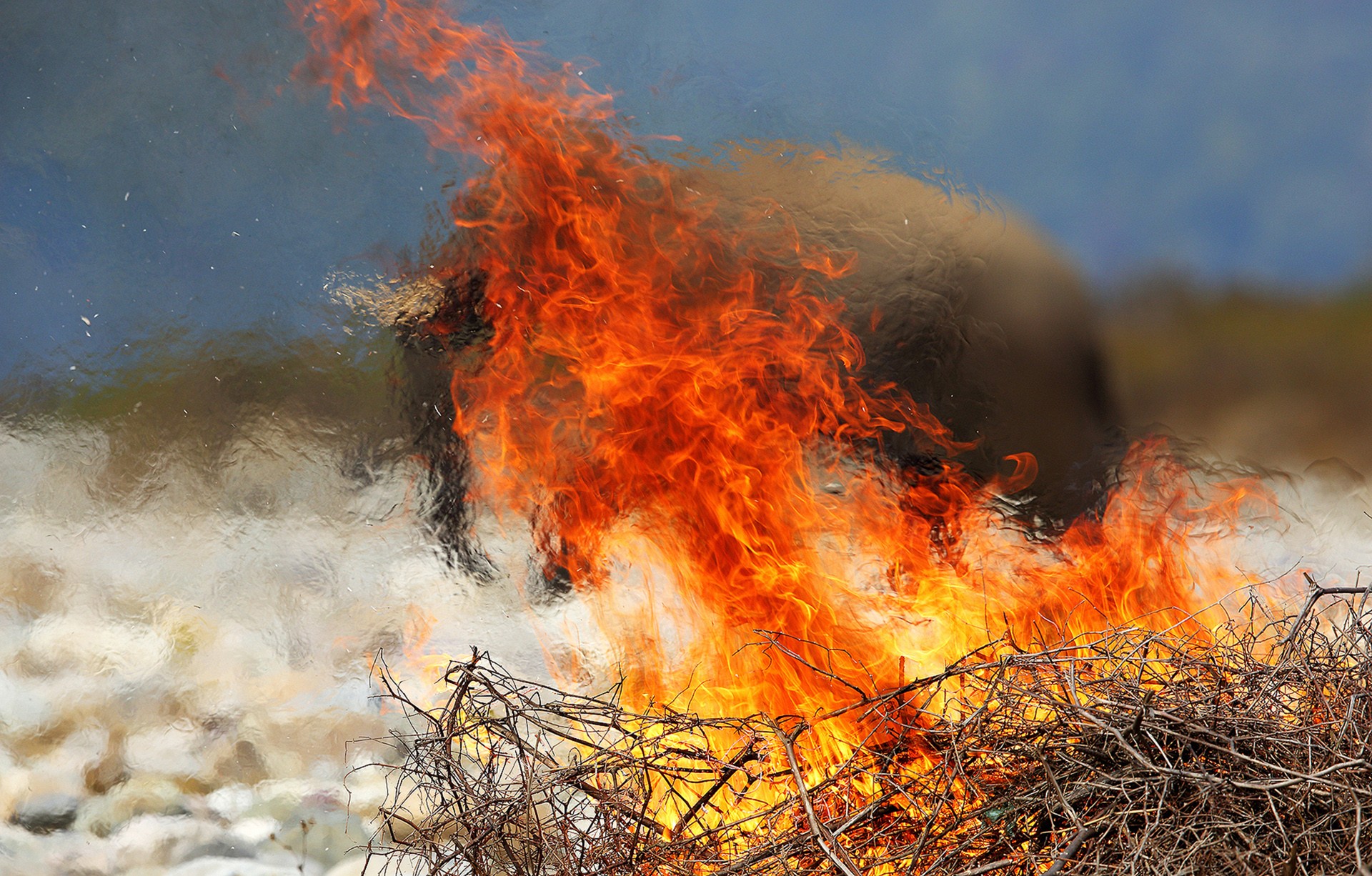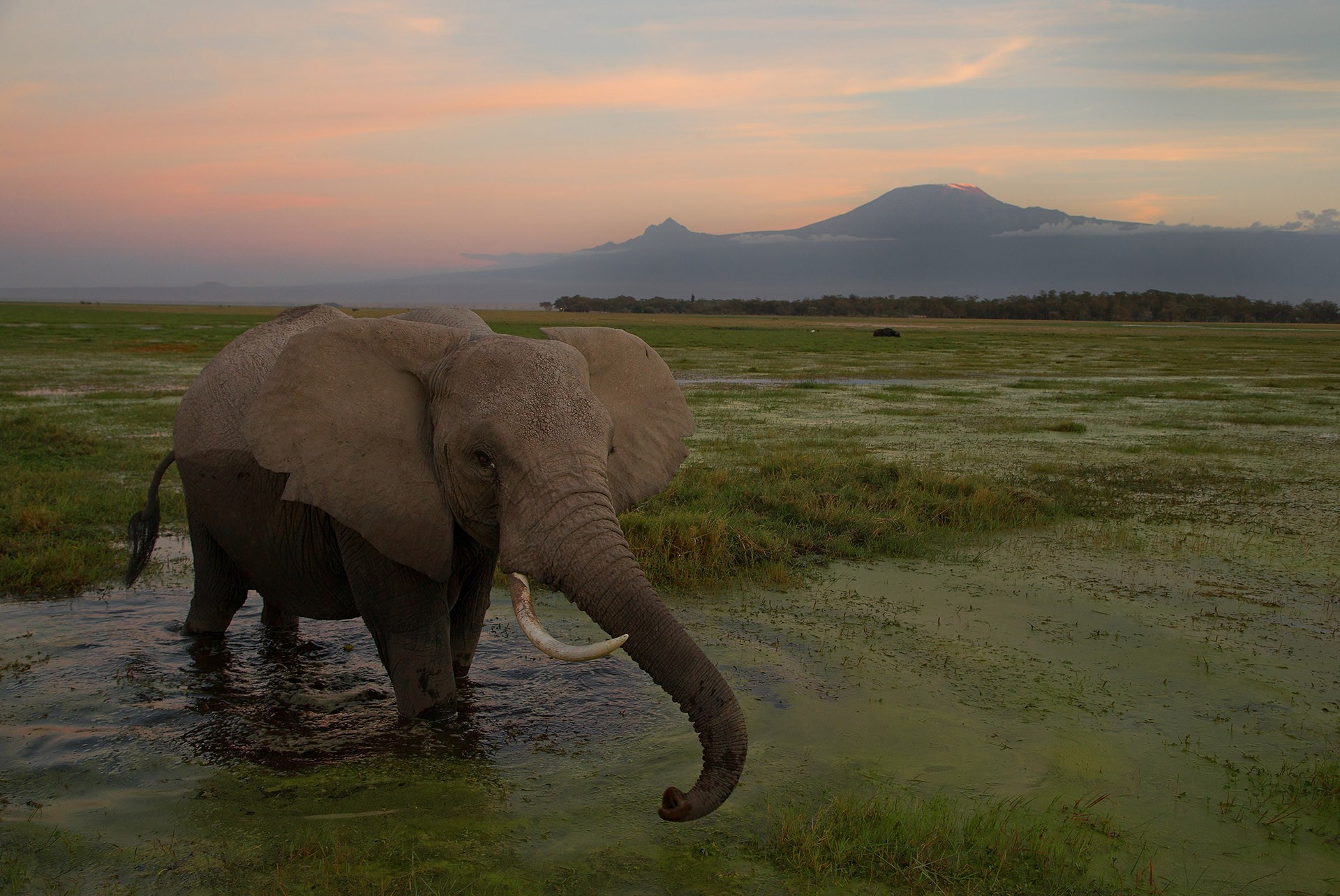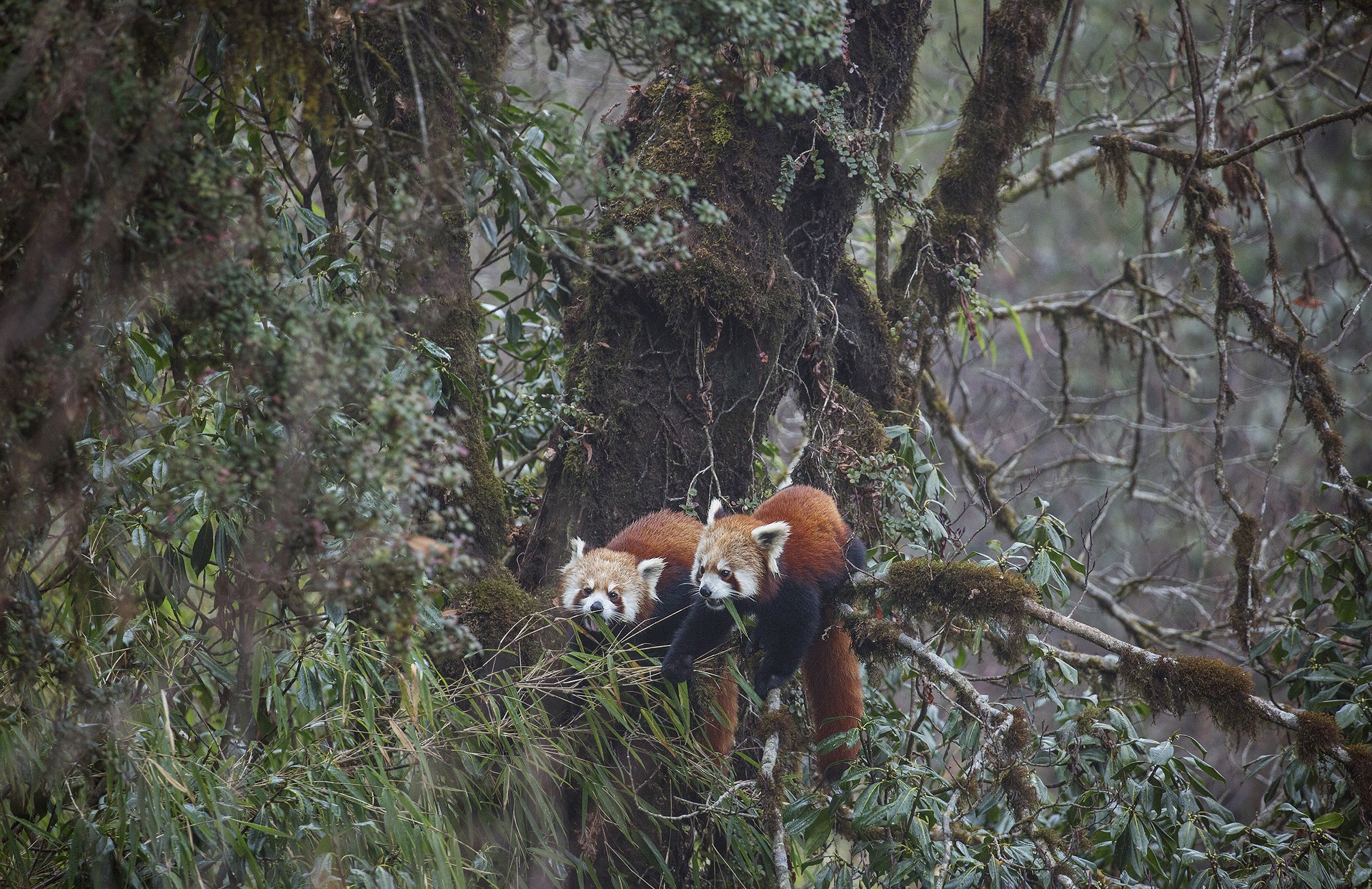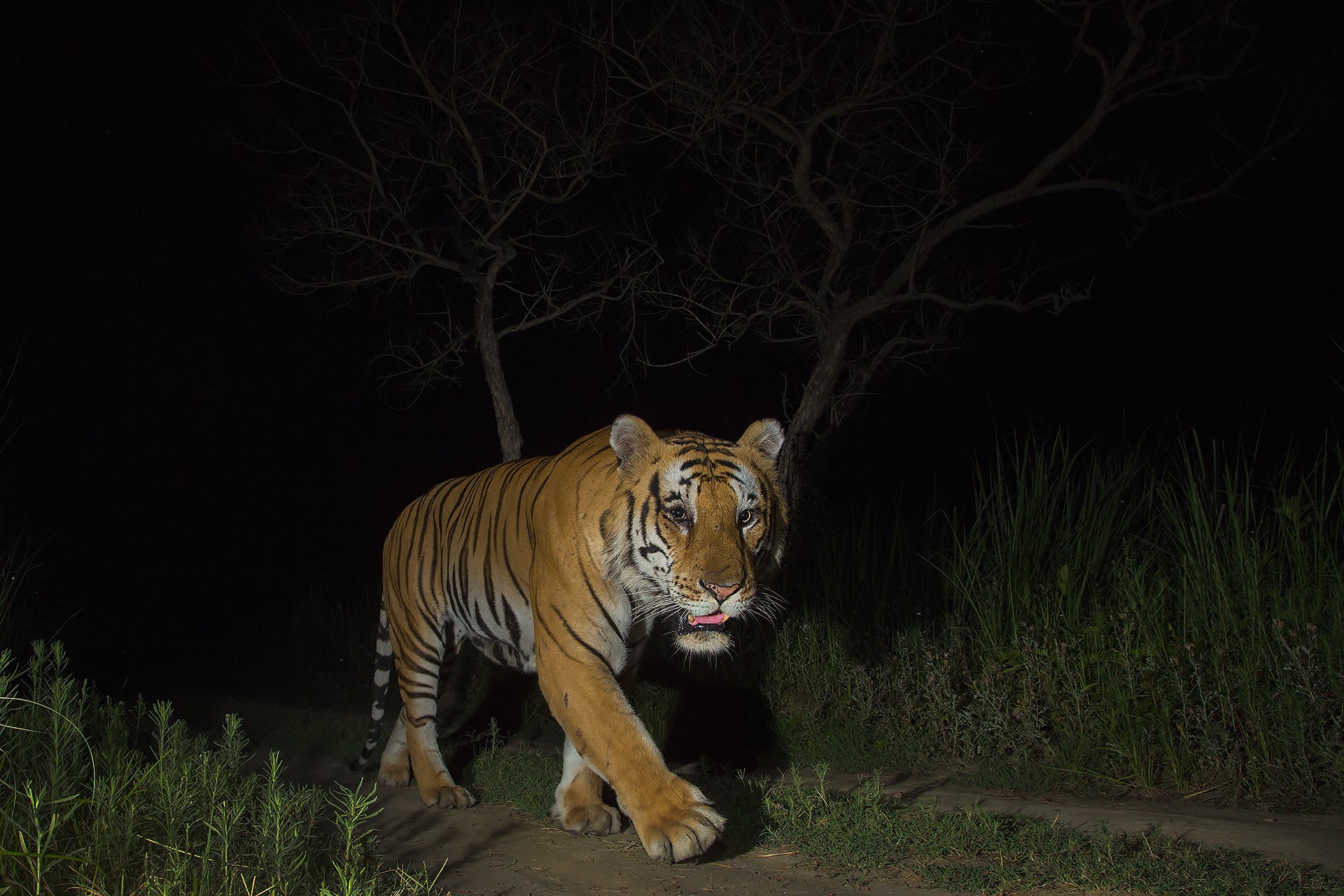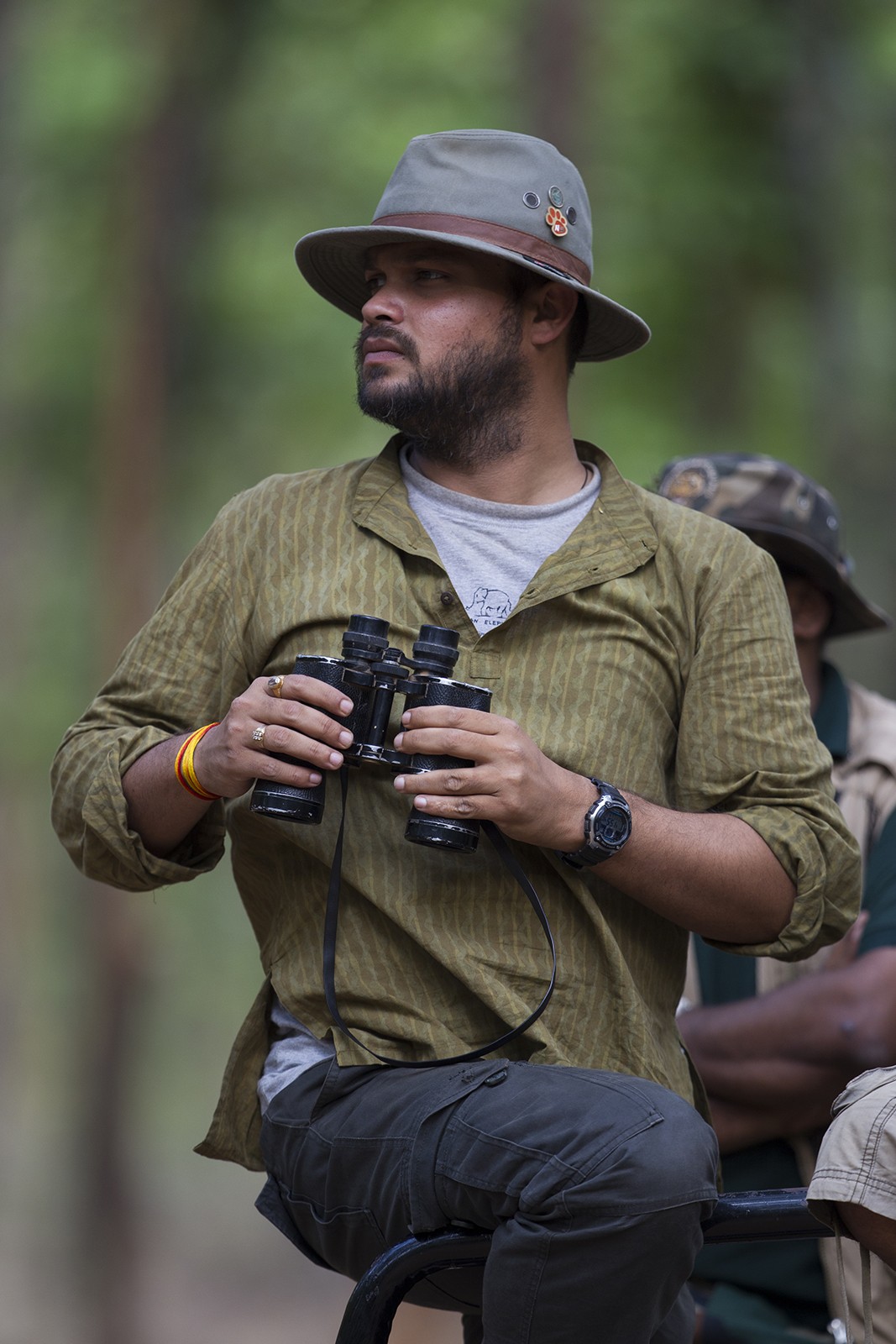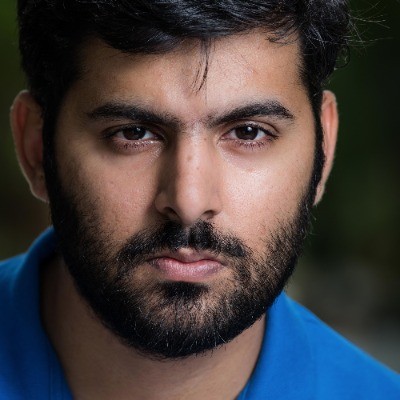Passion is a curious thing. It can take root from the simplest of experiences. Shivang Mehta can attest to this, because a single visit to one of the most iconic wildernesses of our country sixteen years ago transformed the entire course of his career. After experiencing the wonder that is Jim Corbett National Park, Mehta reinvented himself from a journalist and PR professional to a full-time nature photographer.
In the years since, his work has been recognised by some of the most prestigious nature photography platforms such as Sanctuary, DJ Memorial, NDTV, and Nature’s Best Photography Asia, among others. Nature Wanderers, the company he founded with like-minded professionals, has now completed over 400 photography tours in India and various parts of Africa, helping thousands of budding photographers gain the skills they need to grow in the field.
Recently, Mehta authored a coffee table book called A Decade with Tigers, which documents the lives of some of India’s iconic big cats from the country’s well known tiger reserves. You’ll learn more about Vijaya, Machhli, Sundari, Collarwali, and many other interesting characters.
We get to know the man behind the lens a little better.
Your tryst with the wild began at Corbett National Park. How did that happen? And why is Corbett so special to you?
My journey began in Corbett in 2002 when I visited the park just like any other tourist. Incidentally, it was also the first time I would see a wild tiger. From there on, I was hooked, making multiple visits to the park – that's how I think it starts for many people bitten by the wildlife bug.
I took up a marketing position with a small campsite situated in the nearby Ringora village, Camp Wild Adventure. Located on the banks of the Kosi river, this was ideal for those wanting to connect with nature. It allowed me to document some of the wildlife there, including the rich birdlife. During that time, I used to drive in Corbett, and participate in the forest department’s surveys and census activities. That’s how I got an opportunity to explore its different areas and habitats, including walking in the Dhikala grasslands. These learnings proved invaluable to the understanding of the park I have today.
For me, it is the best place for wildlife photography in India because of the diversity of the habitats – the sal forest, the grasslands, the rivers and riverbeds. It’s like a cinemascape and oftentimes, what the subject is may not matter. In fact, the tiger hysteria is a recent phenomenon, as more and more photographers have started visiting from different cities. I don’t chase tigers when on safari there; I end up chasing light. That’s been my approach to photography, and gradually more people, I think, are beginning to understand this. Moreover, when you visit other parks, even on full-day safaris there are times you may not see anything, but in Corbett, I don’t think that’s possible even on a single day.
Photography has led you to many parts of Africa, including South Africa, Kenya, Tanzania, and Botswana. What kind of opportunities does that continent present to wildlife photographers?
Many photographers in India have this mindset - ‘I’ve just started photography. I’m not quite ready for a Masai Mara trip.’ But I think it’s the other way round – you have many more opportunities in the African continent photography-wise, and it’s a great place to experiment and learn. You can take what you learned and use it in scenarios here in India where typically, it is much harder to see an animal like a tiger, and that too you get just a couple of minutes usually, in which you have to make sure everything is right before taking that frame.
Take for example, using a slower shutter speed to show motion blur when an animal moves. It will be extremely risky to do that here in India because more often than not, you do not get enough time with the subject. 90 percent of people won’t have the heart to try this, which is not the case when you are photographing in Africa, where you could do it even 50 times a day, maybe panning a wildebeest. One can even experiment with backlit photography, as the terrain is more open there. You learn a lot about capturing action or a hunt sequence: which animal you should focus on and where you position your jeep.
Recently, when I was in Namibia, I was productively using flash in my photography. In India, flash is considered taboo, the perception being that it disturbs the animal. The same issue exists with forest department camera traps as well then, right? I feel that it is just another creative enhancement, and is even necessary for certain frames. Mental blocks like these get cleared when one visits international photography destinations like this.
So Africa represents a great place to develop the creative side of a photographer, to experiment and sharpen one’s skills. I believe I have become a better photographer because of my experiences there.
You have won multiple photography awards. How important are awards in this field?
Winning an award does boost the morale of a photographer – it feels nice. Awards are beneficial for a photographer even from a financial perspective, because you don’t earn much with wildlife photography alone.
For photographers looking to enter competitions, it’s worth noting that in prestigious competitions like NHM, the trend is increasingly on conceptual images now, though of course natural history still holds relevance too. The conceptual aspect is what Indian photographers will have to work on. Going forward, people have to think of powerful concepts, outside the scope of safari jeeps, and start executing those.
When it comes to awards, my approach has always been to participate in them, but then not think about them too much. One’s photography cannot work around just winning an award. It’s important to remember there is that element of luck even after all the hard work you may have put in to create the concept and execute that image. And I know many great photographers who don’t participate in competitions at all, once again proving that awards are not the benchmark of going to the next level. For that, you just have to keep innovating.
Safaris are fast becoming an expensive affair, especially in the popular tiger reserves, where a single safari can cost upwards of ₹5000 per jeep, and online safari slots now fill up 2-3 months ahead of time. Do you think wildlife photography is starting to become an increasingly elite hobby, out of reach of the common man?
I think it has always been an elite hobby. Safaris may feel more expensive now when compared to earlier costs, but spending 10 years in Corbett, I’ve always felt they were expensive. So, it’s a relative thing. I guess in a place like India if you want to go on safaris and come back with a professional set of images, money is something you will have to spend, that’s how you get quality stuff.
When we started Nature Wanderers a few years ago, it was probably the first professional photography tour company in India to help people plan their safaris. Things do become more affordable when sharing costs, plus you learn a lot when you participate in group tours.
Your company, Nature Wanderers, is now one of the largest companies in India for wildlife photography tours. What are some critical factors to consider before planning a wildlife expedition or photography tour?
I think a better description of our fraternity would be ‘photography guides’. We have some great talent in this field – Sudhir Shivaram, Giri Cavale, Jayanth Sharma. In today’s times, there are plenty of new photo tour companies coming up around the country, and from an industry perspective, this is good, as people get multiple options. My advice to all young photographers joining this field of photo tourism is to remember you may be a very talented photographer, but there is a difference between being a good photographer yourself and a good photography guide. You have to prioritise the work of your clients, and plan for them so that they get good images. The sooner that transition – from being a photographer to a photography guide – happens, the better the chances of having a good career in this field.
For someone going on a tour, they should definitely consider the experience of a company in a particular location, the experience of the photography guide. The safari driver and guide may take you to a particular location, but once you’re there in front of the subject, that’s when the photography guide comes into the picture.
Shivang Mehta showcased his work at the Nature inFocus Festival, 2017. If you missed it, or would like to listen to his talk, here it is.
